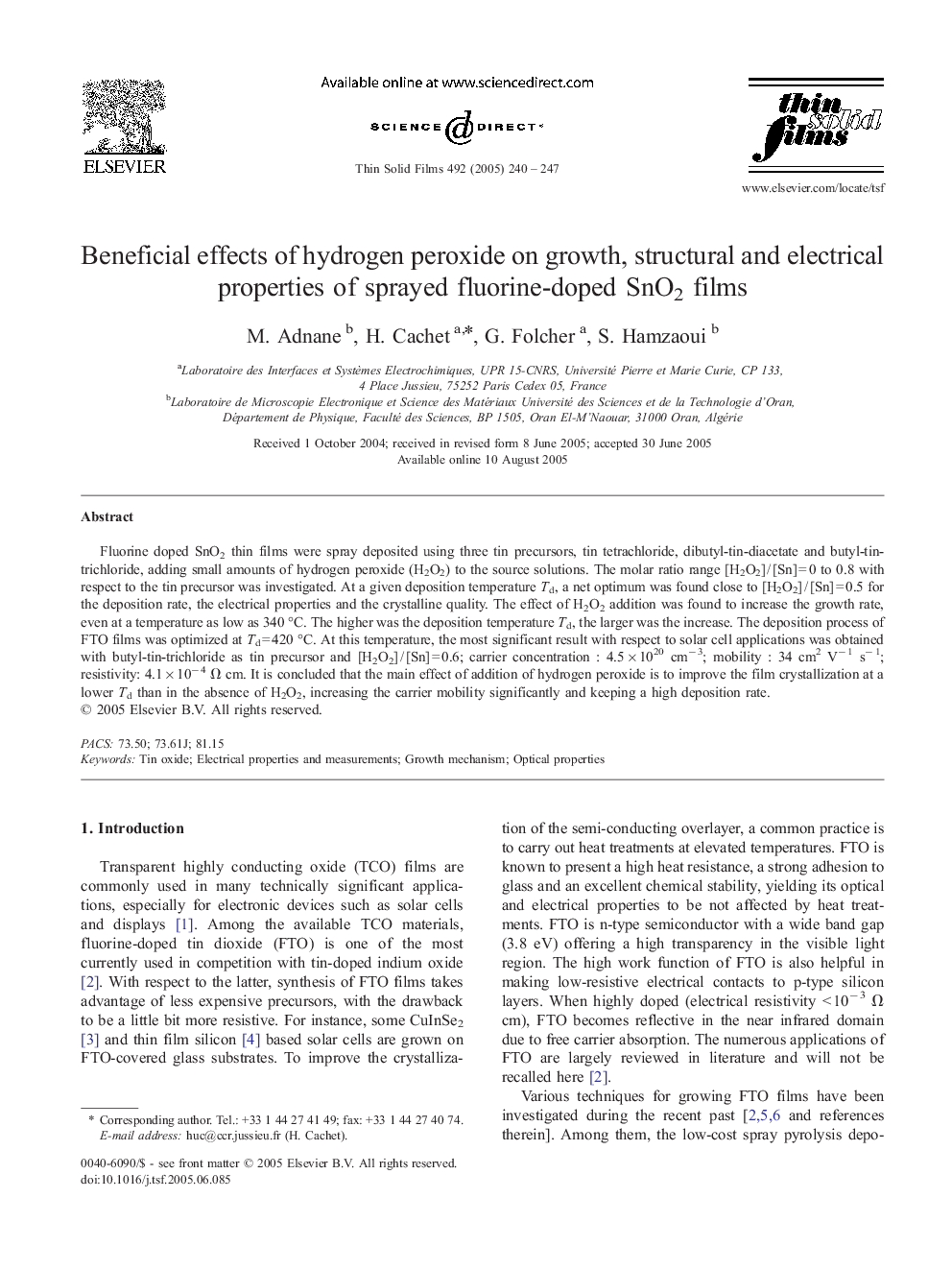| Article ID | Journal | Published Year | Pages | File Type |
|---|---|---|---|---|
| 9812146 | Thin Solid Films | 2005 | 8 Pages |
Abstract
Fluorine doped SnO2 thin films were spray deposited using three tin precursors, tin tetrachloride, dibutyl-tin-diacetate and butyl-tin-trichloride, adding small amounts of hydrogen peroxide (H2O2) to the source solutions. The molar ratio range [H2O2] / [Sn] = 0 to 0.8 with respect to the tin precursor was investigated. At a given deposition temperature Td, a net optimum was found close to [H2O2] / [Sn] = 0.5 for the deposition rate, the electrical properties and the crystalline quality. The effect of H2O2 addition was found to increase the growth rate, even at a temperature as low as 340 °C. The higher was the deposition temperature Td, the larger was the increase. The deposition process of FTO films was optimized at Td = 420 °C. At this temperature, the most significant result with respect to solar cell applications was obtained with butyl-tin-trichloride as tin precursor and [H2O2] / [Sn] = 0.6; carrier concentration : 4.5 Ã 1020 cmâ 3; mobility : 34 cm2 Vâ 1 sâ 1; resistivity: 4.1 Ã 10â 4 Ω cm. It is concluded that the main effect of addition of hydrogen peroxide is to improve the film crystallization at a lower Td than in the absence of H2O2, increasing the carrier mobility significantly and keeping a high deposition rate.
Keywords
Related Topics
Physical Sciences and Engineering
Materials Science
Nanotechnology
Authors
M. Adnane, H. Cachet, G. Folcher, S. Hamzaoui,
